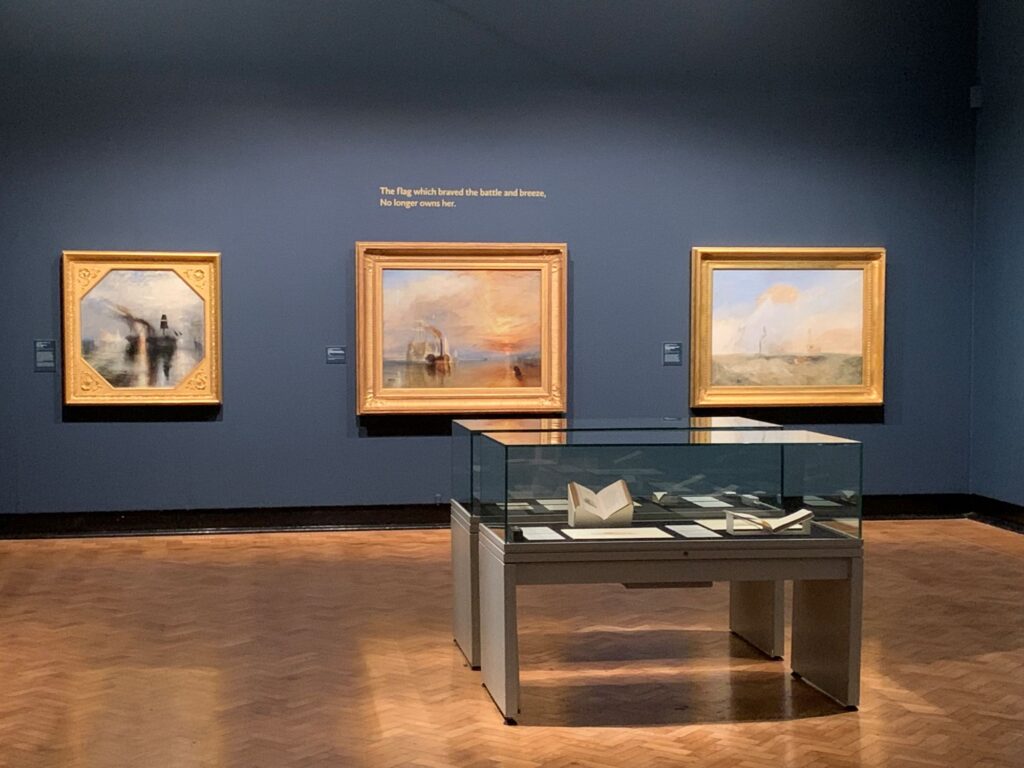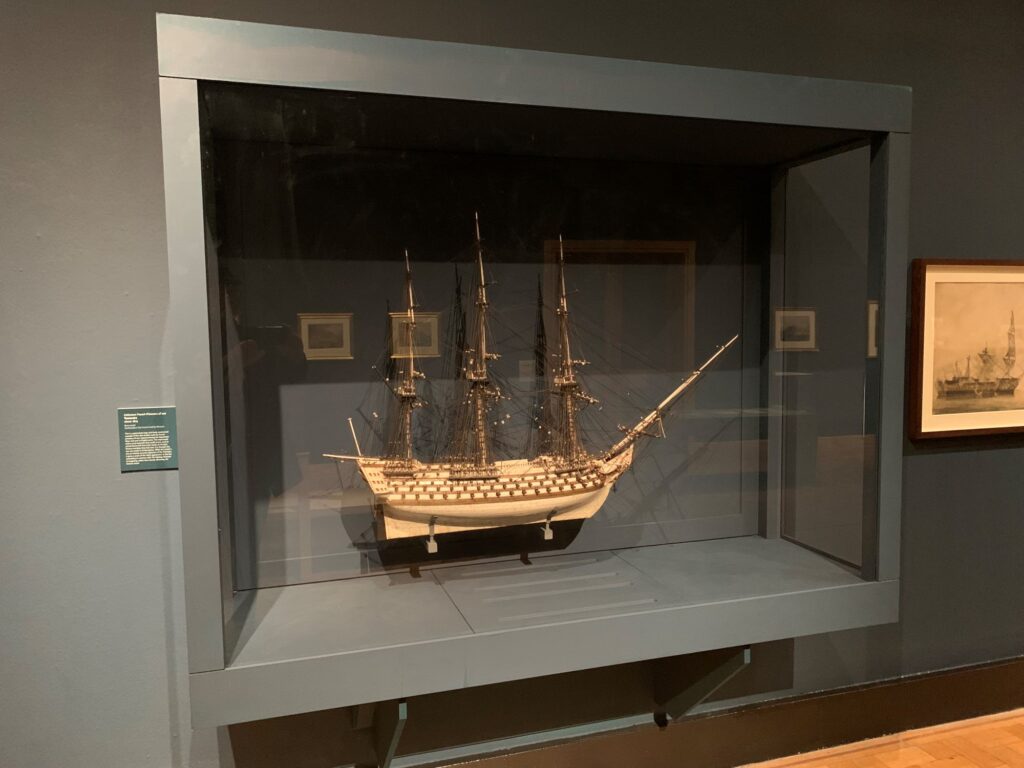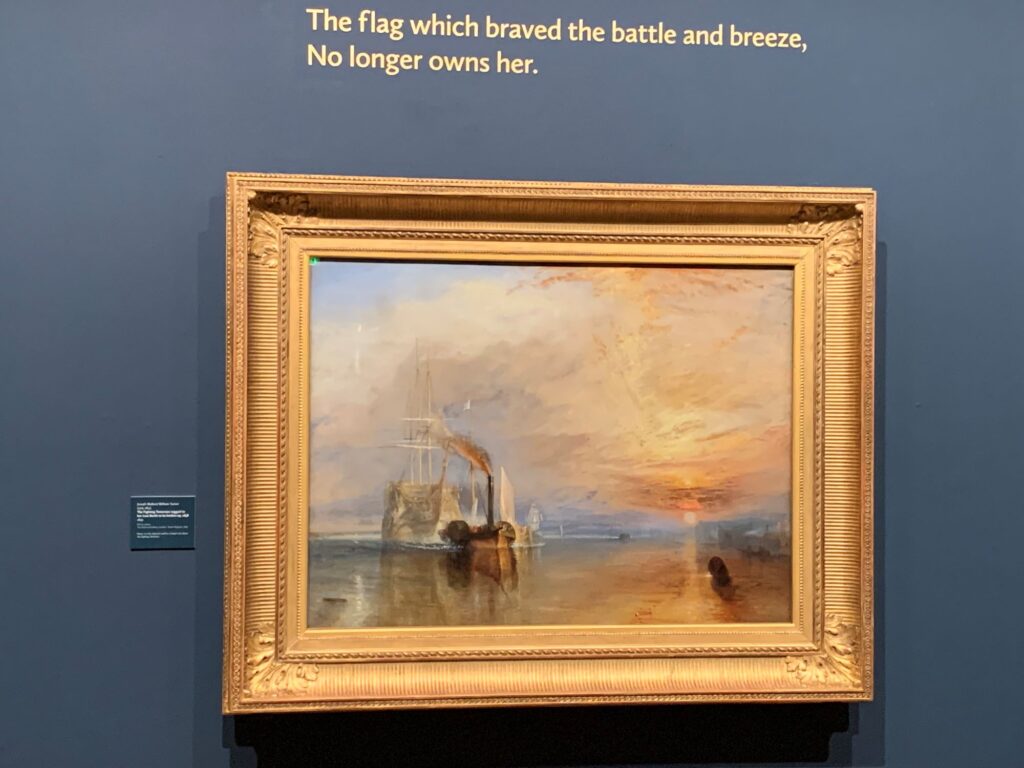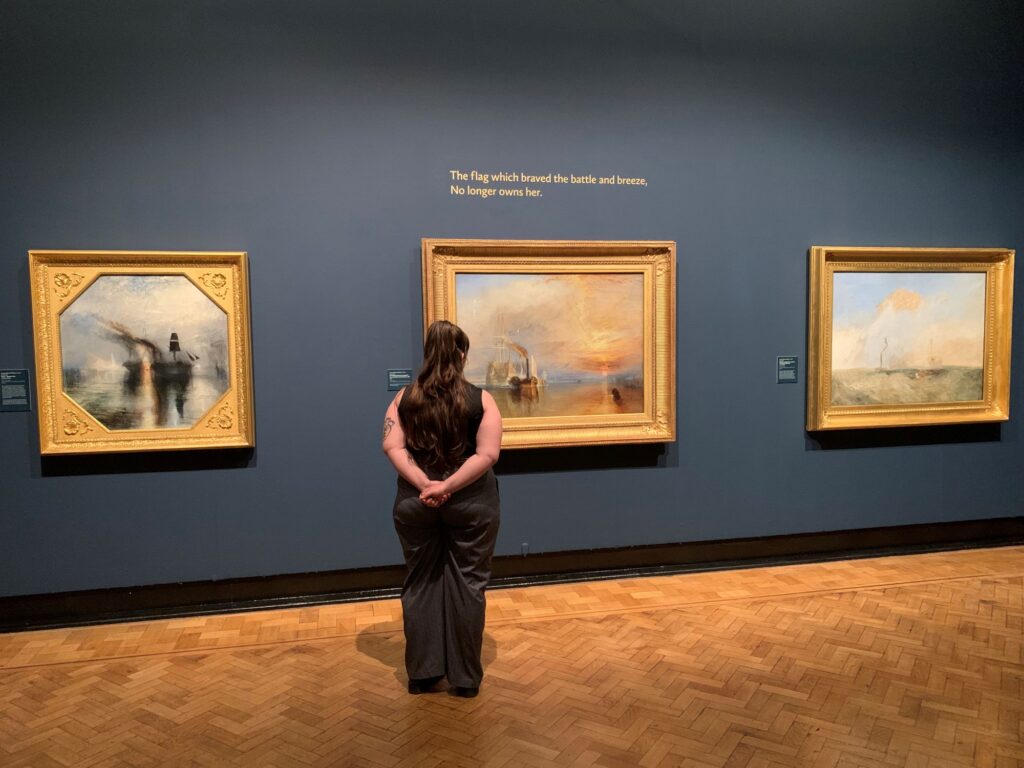
It’s the exhibition a lot of people have been waiting for and a first viewing suggests it won’t disappoint.
Last time the National Gallery sent one of its great treasures to Tyneside, it was displayed in splendid isolation in the Viking Shopping Centre, in Jarrow.
That was last summer, the painting was The Cornfield by John Constable and its sojourn in the North East was brief.
Now we have The Fighting Temeraire, painted just over a decade after The Cornfield and first exhibited in 1839, and it’s an artistic flagship in a veritable fleet of paintings, sketches, photos and even a video – all lending valuable context.
Far from seeming gloriously incongruous in its setting, as the Constable did, this JMW Turner creation seems in its element – a maritime masterpiece berthed for four months in a city with a rich maritime history.

As has been reported, the tugboats hired to nudge the great battleship – relic of the famous victory at Trafalgar – on its final voyage to the Thames breaker’s yard were built on the Tyne.
And symbolically the painting seems to represent the end of an era, sail giving way to steam and the Industrial Revolution of which the North East was a driving force.
Lizzie Jacklin, who curated the exhibition for Tyne & Wear Archives & Museums, said it has taken two-and-a-half years to assemble.
“You need that amount of time. The partners have been really supportive but it’s always a complicated process bringing together loans on this scale.
“There are a lot of conditions to be met and usually not everything you would like to come is available.”
- Read more: Legends of Auf Wiedersehen, Pet stage a return
- Read more: Late Shows artists prepare for a big night
Lizzie said it was the National Gallery that suggested The Fighting Temeraire would be a good fit for the Laing and would resonate with people in the region.
But there had been no stipulation about how it should be displayed.
“They were wonderful really, both very helpful whenever we had a question but allowing us plenty of creative freedom.
“Obviously The Fighting Temeraire was our starting point – the anchor if you’ll excuse the pun – and we worked outwards from there.
“I was keen to give a bit of context around the subject matter of the picture, the Napoleonic Wars, because I think it’s distant to us now and hard to imagine how it surrounded the first part of Turner’s life.
“Also I saw that there hadn’t really been a contextual display around the picture since 1995 when the National Gallery did something.”

The first room of the exhibition, then, begins with a portrait of a studiously benign looking Turner in the print room of the British Museum by an artist called John Thomas Smith.
Then there are Turner’s watercolour landscapes, the castles at Dunstanburgh and Warkworth looking impressively dramatic in 1798 and 1799 respectively.
You’ll also find Turner depictions of Brinkburn Priory, Tynemouth and Holy Island, capturing the wildness that makes these places special even today.
There are scenes of Napoleonic warfare at sea, which must have been terrifying to be part of, and on one wall a chilling remark attributed to the North East’s hero of Trafalgar, Admiral Lord Collingwood: “Such a battle could not be fought without sustaining a great loss of men.”
The exhibition’s big guns are in the second room, The Fighting Temeraire, glowing with the orange light of a low sun, the big ship grey and ghost-like, flanked by two other tremendous paintings.
To the right is Turner’s impressive first ‘sketch’ for the painting (few nowadays would call it that) and to the left is Peace – Burial at Sea, which Lizzie said was another great favourite of hers.
“It’s quite a dark painting but I’ve always loved its drama and atmosphere.”
This painting, like others in the exhibition, is part of the extensive Turner Bequest and on loan from the Tate.
In a nearby display case is a less impactful but no less fascinating object, a diary note by Turner written (just about legibly) in around 1845 in which he records his refusal to lend The Fighting Temeraire, the painting he calls “my Darling”.
“I hoped the British Museum would be able to lend it and it’s lovely that they have,” said Lizzie.
“Obviously it’s not as visual an object as some of the other things but I think it’s quite poignant.”
- Read more: Laughter and tears with The Olive Boy
- Read more: All aboard for The Last Cage Down
At the opposite end of the second room is a wide array of artworks by artists either influenced by Turner and his working methods or drawn to similar subjects.
Among the exhibits from the Laing’s own collection are 1970s shipyard photographs by Chris Killip, the darkly industrial River Scene by LS Lowry, dated 1935, and an oil painting by Thomas William Pattison called Tankers at Middle Dock, South Shields, dated 1945-50.
An illustrated guide to the exhibition is on sale in the gallery which is open from Monday to Saturday.
There is an admission charge to see Turner: Art, Industry & Nostalgia which opens tomorrow (May 10) and runs until September 7.
Find full details on the Laing Art Gallery website
















